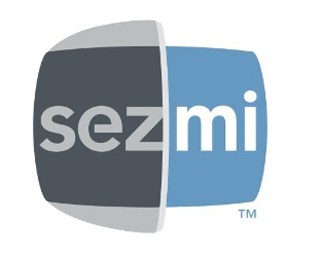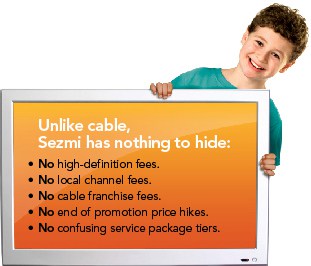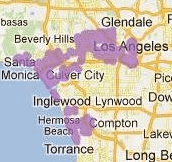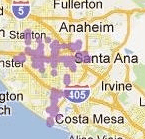 Just over one year ago, Stop the Cap! introduced readers to Sezmi, a cable-TV alternative that delivered a package of selected cable networks, on-demand movies, video podcasts, YouTube content and local broadcast stations with a 1TB DVR set top box for $19.99 a month. Subscribers that decided to forgo the cable networks paid even less — $4.99 a month for service.
Just over one year ago, Stop the Cap! introduced readers to Sezmi, a cable-TV alternative that delivered a package of selected cable networks, on-demand movies, video podcasts, YouTube content and local broadcast stations with a 1TB DVR set top box for $19.99 a month. Subscribers that decided to forgo the cable networks paid even less — $4.99 a month for service.
But no more.
As of this morning, Sezmi has discontinued its service, leaving customers with a nearly-worthless set top DVR box they spent $149.99 to acquire, and a number of questions about the company’s sudden change of direction.
The company issued a statement telling customers it has ceased monthly billing and giving customers until later this year to use some of the features Sezmi operates in-house:
We regret to inform you that Sezmi is discontinuing its consumer service. As of Monday, September 26, 2011, you will no longer be able to view or record broadcast TV programming through your Sezmi System. However, you will still be able to view movies and shows you have already saved to your Sezmi media recorder. To help ease the transition, you may also rent movies and shows if available at no charge from Sezmi’s On Demand catalog through November 1, 2011.
Why do you have to discontinue your consumer service?
Sezmi has changed its business focus to providing our product and technology platform to service providers, internationally and in the U.S., who are interested in providing broadband video services to their customers. As a result, we are no longer supporting our direct-to-consumer service.
What does this mean for me?
You will no longer be billed for Sezmi service. As of September 26th, you will no longer be able to utilize the programming guide and your digital media recorder will no longer operate as a recorder. You will be able to view movies and shows you have already saved to your recorder and YouTube access will not be affected. Between now and November 1st, you may rent any movies or shows at no charge to you. After November 1, Sezmi’s On Demand catalog will no longer be available but you will be able to use your Sezmi system to view all programming you have saved to the media recorder.
What it also means is customers are stuck with a proprietary DVR box that won’t work with other services.
Sezmi’s business model was most operational in the Los Angeles market, where it leased unused spectrum from several LA-area television stations to carry its lightweight cable package. In other markets, Sezmi simply wedded over the air digital free television stations with its online lineup of on-demand programming and charged $4.99 a month to watch. It was never a compelling offer outside of Los Angeles, and even in that city, trouble brewed when Sezmi discontinued the cable package in December.
Among the difficulties Sezmi encountered:
- Finding cooperative local broadcasters willing to lease unused digital spectrum to Sezmi proved to be a difficult proposition. Broadcasters are zealously guarding the frequencies they control now and do not want to get into long-term contracts with third parties. Network owned stations in major cities may have already committed significant spectrum to their own sub-channels and other projects, or want to hold them in reserve for future use. Besides, why lease spectrum to a company for a cable package large networks could theoretically build themselves.
- Sezmi lacked access to many popular cable channels, notably ESPN and HBO. It’s difficult to get consumers to drop a cable or telco-TV subscription in favor of one that is limited to two dozen cable channels, some of which were hardly deal-sealers. Efforts to move cable channel programming to online distribution were met with difficulty because content owners increasingly want a piece of the action. Deep pockets are required to sustain video streaming businesses.
- Consumers never really understood the product and were not convinced to choose it over better known alternatives that included satellite TV.
Sezmi’s new focus on working with larger players could meet with some success, but Sezmi’s best chances of all could be developing the technology for ethnic audiences or other narrowcast opportunities where the lack of a hundred plus channel cable package would not be a factor.


 Subscribe
Subscribe







